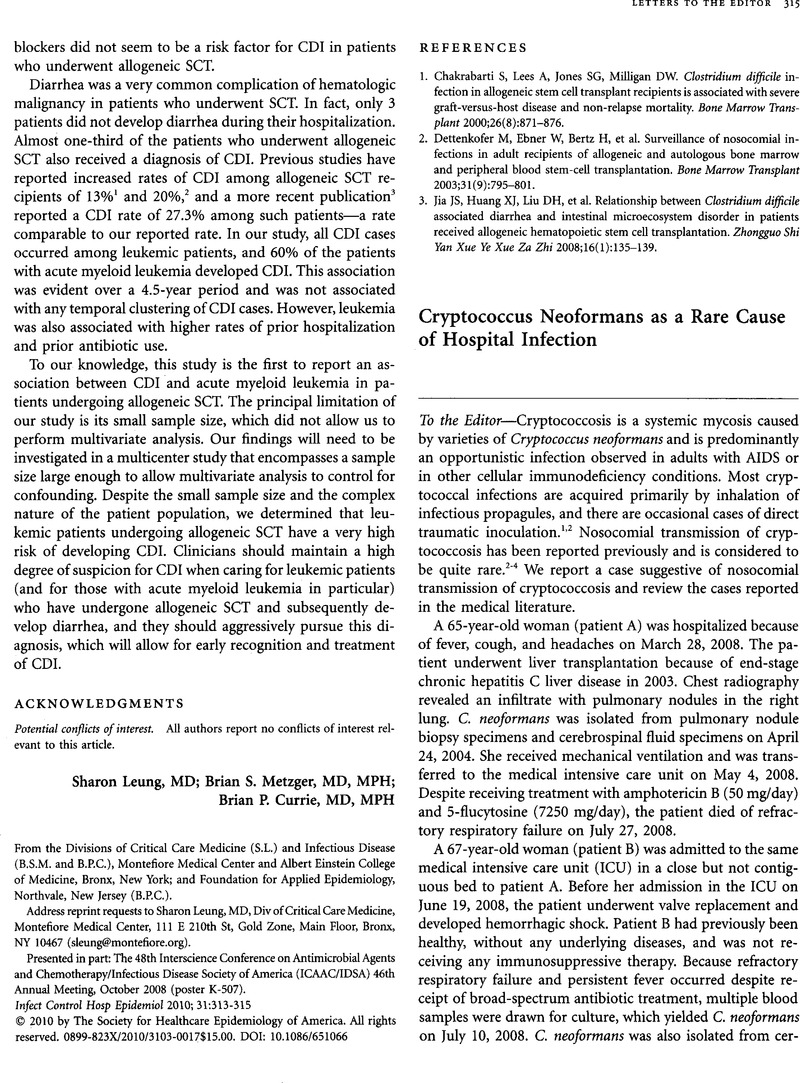Crossref Citations
This article has been cited by the following publications. This list is generated based on data provided by Crossref.
Kennedy, E.
Vanichanan, J.
Rajapreyar, I.
Gonzalez, B.
Nathan, S.
Gregoric, I.
Kar, B.
Loyalka, P.
Weeks, P.
Chavez, V.
Wanger, A.
and
Ostrosky Zeichner, L.
2016.
A pseudo‐outbreak of disseminated cryptococcal disease after orthotopic heart transplantation.
Mycoses,
Vol. 59,
Issue. 2,
p.
75.
Douglas, Abby P.
Stewart, Adam G.
Halliday, Catriona L.
and
Chen, Sharon C.-A.
2023.
Outbreaks of Fungal Infections in Hospitals: Epidemiology, Detection, and Management.
Journal of Fungi,
Vol. 9,
Issue. 11,
p.
1059.





